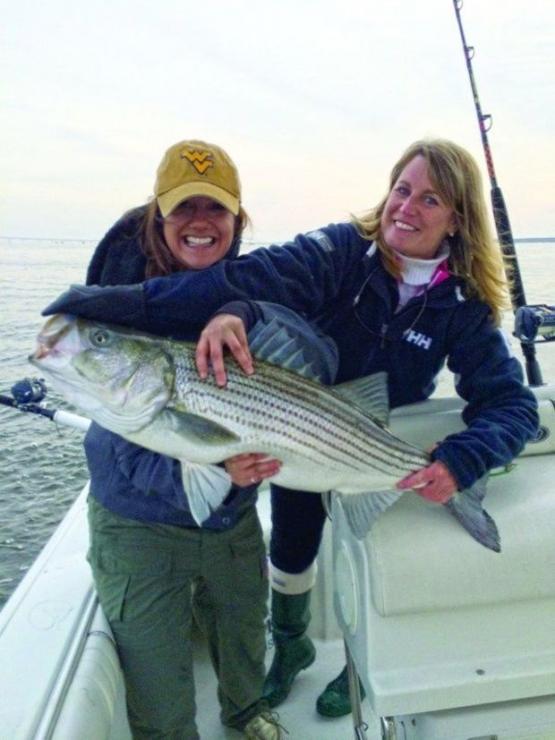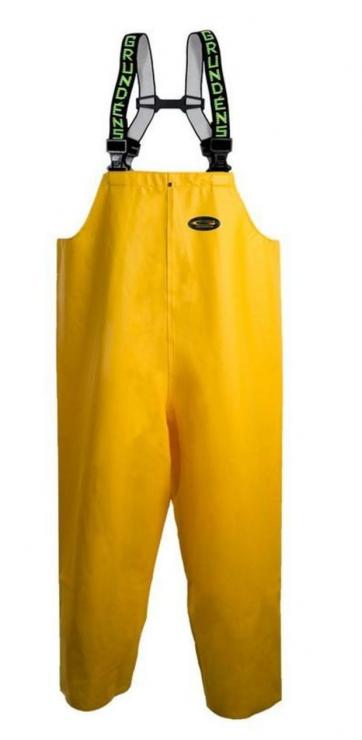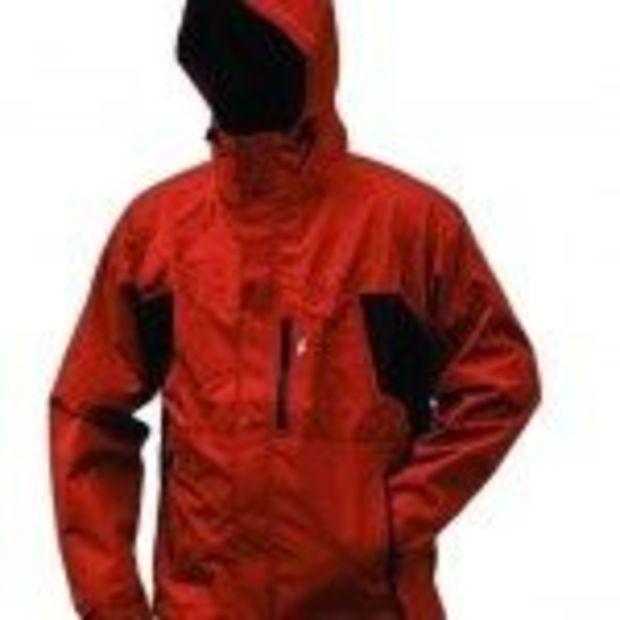by Capt. Chris Dollar
In anticipation of the change of seasons, both weather-wise and outdoor-pursuit wise, I tried to find my heavy-weight foul weather bibs. I recovered them relatively quickly, hanging on their peg waiting patiently to be of service once again.

But also what I discovered in my gear shed was a cluster of disturbing proportions — light tackle spin rods unnaturally commingled with surf rods, feather jigs, and topwater fly cases on the same shelf, early season decoys entwined with late season dekes. The whole scene was an uncomfortable crossing of the streams, and I almost shut the door on the whole mess. But reason resumed, and I knew the only sensible thing to do was lay out everything on the lawn and reorganize.
The process chewed up valuable time that I could have spent fishing, duck or dove hunting, or anything else that didn’t require me to think about the axiom everything has a place and everything in its place. It was a chore that had to be done.
As I slogged through the process, I discovered tucked away on a shelf a still-in-the-packaging set of Grundens foul weather gear: a heavy-weight jacket and matching bibs. But I was really stoked to find beneath the bibs and jacket an anorak-style pullover that has PVC coated over heavy cotton twill on the sleeves and below the chest with fleece everywhere else. It was like pulling out a $20 bill after a night of hard drinking. Also never removed from its cellophane cocoon, I scanned the memory bank to try and determine when I purchased this item, as it’s one of my favorite jackets to wear fishing in the fall.

It also got me to thinking about the scores of choices fishermen and boaters have when it comes to keeping dry and warm as we head into autumn. So that evening I shot an email to colleagues and friends, curious what they pull on when the weather turns sour. In my highly unscientific survey, with a margin of error in direct proportion to the number of beers I consumed, I found that the two favorites among my crowd were Grundens and Frogg Toggs.
Specifically, the fishermen I asked prefer the lighter weight Frogg Toggs (the Pilot series was mentioned several times) in sweet weather yet when the Chesapeake turns evil and spits a hard Nor’East blow, Grundens got the nod.
These two companies are good examples of the range of products and materials available. A Scandinavian legend, Grundens has been around for more than 100 years, whereas the Alabama-based Frogg Toggs was founded in 1996. Grundens began coating its fabrics with PVC in the 1950s, and today is still a top choice for watermen and others who spend long hours in the harsh elements. Frogg Toggs are made of modern, lightweight, and breathable materials. For example, the company says its C3 DriPore performance gear sports the latest in fabric technology to keep you dry, yet is light as a feather.
There are numerous other companies that offer similar quality products, of course. Bay and bluewater angler Kim Madigan, the mid-Atlantic marine finance manager for Offshore Financial Services, favors Cape Fear or Helly Hansen. Charter boat captain Mark Galasso says Cabela’s Guide Wear is his top pick.

“I have a pair of the heavy bibs and jacket, and I also have a pair of the light-weight ones,” he says, recalling one day in late December when he fished down at the CBBT in a blinding snow storm. “I had to wear ski goggles to drive the boat. But I was warm! Only one other fool out.” West Marine and Bass Pro gear also got mentioned.
I’ve tried Gore-Tex but have to say I’m not a big fan. I don’t like the way it feels or hangs on my frame. So here’s the upshot: like fishing reels and lures, everyone has different styles and needs. Modern materials make staying dry and warm so much easier, yet the tried and true still bring it every day. You really can’t lose as long as don’t you pick a set of foulies from the bargain bin at the hardware store. Crack open your wallet and pay for quality. Your investment will pay off in the form of more time on the water and more fish on the end of your line.
 But also what I discovered in my gear shed was a cluster of disturbing proportions — light tackle spin rods unnaturally commingled with surf rods, feather jigs, and topwater fly cases on the same shelf, early season decoys entwined with late season dekes. The whole scene was an uncomfortable crossing of the streams, and I almost shut the door on the whole mess. But reason resumed, and I knew the only sensible thing to do was lay out everything on the lawn and reorganize.
The process chewed up valuable time that I could have spent fishing, duck or dove hunting, or anything else that didn’t require me to think about the axiom everything has a place and everything in its place. It was a chore that had to be done.
As I slogged through the process, I discovered tucked away on a shelf a still-in-the-packaging set of Grundens foul weather gear: a heavy-weight jacket and matching bibs. But I was really stoked to find beneath the bibs and jacket an anorak-style pullover that has PVC coated over heavy cotton twill on the sleeves and below the chest with fleece everywhere else. It was like pulling out a $20 bill after a night of hard drinking. Also never removed from its cellophane cocoon, I scanned the memory bank to try and determine when I purchased this item, as it’s one of my favorite jackets to wear fishing in the fall.
But also what I discovered in my gear shed was a cluster of disturbing proportions — light tackle spin rods unnaturally commingled with surf rods, feather jigs, and topwater fly cases on the same shelf, early season decoys entwined with late season dekes. The whole scene was an uncomfortable crossing of the streams, and I almost shut the door on the whole mess. But reason resumed, and I knew the only sensible thing to do was lay out everything on the lawn and reorganize.
The process chewed up valuable time that I could have spent fishing, duck or dove hunting, or anything else that didn’t require me to think about the axiom everything has a place and everything in its place. It was a chore that had to be done.
As I slogged through the process, I discovered tucked away on a shelf a still-in-the-packaging set of Grundens foul weather gear: a heavy-weight jacket and matching bibs. But I was really stoked to find beneath the bibs and jacket an anorak-style pullover that has PVC coated over heavy cotton twill on the sleeves and below the chest with fleece everywhere else. It was like pulling out a $20 bill after a night of hard drinking. Also never removed from its cellophane cocoon, I scanned the memory bank to try and determine when I purchased this item, as it’s one of my favorite jackets to wear fishing in the fall.
 It also got me to thinking about the scores of choices fishermen and boaters have when it comes to keeping dry and warm as we head into autumn. So that evening I shot an email to colleagues and friends, curious what they pull on when the weather turns sour. In my highly unscientific survey, with a margin of error in direct proportion to the number of beers I consumed, I found that the two favorites among my crowd were Grundens and Frogg Toggs.
Specifically, the fishermen I asked prefer the lighter weight Frogg Toggs (the Pilot series was mentioned several times) in sweet weather yet when the Chesapeake turns evil and spits a hard Nor’East blow, Grundens got the nod.
These two companies are good examples of the range of products and materials available. A Scandinavian legend, Grundens has been around for more than 100 years, whereas the Alabama-based Frogg Toggs was founded in 1996. Grundens began coating its fabrics with PVC in the 1950s, and today is still a top choice for watermen and others who spend long hours in the harsh elements. Frogg Toggs are made of modern, lightweight, and breathable materials. For example, the company says its C3 DriPore performance gear sports the latest in fabric technology to keep you dry, yet is light as a feather.
There are numerous other companies that offer similar quality products, of course. Bay and bluewater angler Kim Madigan, the mid-Atlantic marine finance manager for Offshore Financial Services, favors Cape Fear or Helly Hansen. Charter boat captain Mark Galasso says Cabela’s Guide Wear is his top pick.
It also got me to thinking about the scores of choices fishermen and boaters have when it comes to keeping dry and warm as we head into autumn. So that evening I shot an email to colleagues and friends, curious what they pull on when the weather turns sour. In my highly unscientific survey, with a margin of error in direct proportion to the number of beers I consumed, I found that the two favorites among my crowd were Grundens and Frogg Toggs.
Specifically, the fishermen I asked prefer the lighter weight Frogg Toggs (the Pilot series was mentioned several times) in sweet weather yet when the Chesapeake turns evil and spits a hard Nor’East blow, Grundens got the nod.
These two companies are good examples of the range of products and materials available. A Scandinavian legend, Grundens has been around for more than 100 years, whereas the Alabama-based Frogg Toggs was founded in 1996. Grundens began coating its fabrics with PVC in the 1950s, and today is still a top choice for watermen and others who spend long hours in the harsh elements. Frogg Toggs are made of modern, lightweight, and breathable materials. For example, the company says its C3 DriPore performance gear sports the latest in fabric technology to keep you dry, yet is light as a feather.
There are numerous other companies that offer similar quality products, of course. Bay and bluewater angler Kim Madigan, the mid-Atlantic marine finance manager for Offshore Financial Services, favors Cape Fear or Helly Hansen. Charter boat captain Mark Galasso says Cabela’s Guide Wear is his top pick.  “I have a pair of the heavy bibs and jacket, and I also have a pair of the light-weight ones,” he says, recalling one day in late December when he fished down at the CBBT in a blinding snow storm. “I had to wear ski goggles to drive the boat. But I was warm! Only one other fool out.” West Marine and Bass Pro gear also got mentioned.
I’ve tried Gore-Tex but have to say I’m not a big fan. I don’t like the way it feels or hangs on my frame. So here’s the upshot: like fishing reels and lures, everyone has different styles and needs. Modern materials make staying dry and warm so much easier, yet the tried and true still bring it every day. You really can’t lose as long as don’t you pick a set of foulies from the bargain bin at the hardware store. Crack open your wallet and pay for quality. Your investment will pay off in the form of more time on the water and more fish on the end of your line.
“I have a pair of the heavy bibs and jacket, and I also have a pair of the light-weight ones,” he says, recalling one day in late December when he fished down at the CBBT in a blinding snow storm. “I had to wear ski goggles to drive the boat. But I was warm! Only one other fool out.” West Marine and Bass Pro gear also got mentioned.
I’ve tried Gore-Tex but have to say I’m not a big fan. I don’t like the way it feels or hangs on my frame. So here’s the upshot: like fishing reels and lures, everyone has different styles and needs. Modern materials make staying dry and warm so much easier, yet the tried and true still bring it every day. You really can’t lose as long as don’t you pick a set of foulies from the bargain bin at the hardware store. Crack open your wallet and pay for quality. Your investment will pay off in the form of more time on the water and more fish on the end of your line.